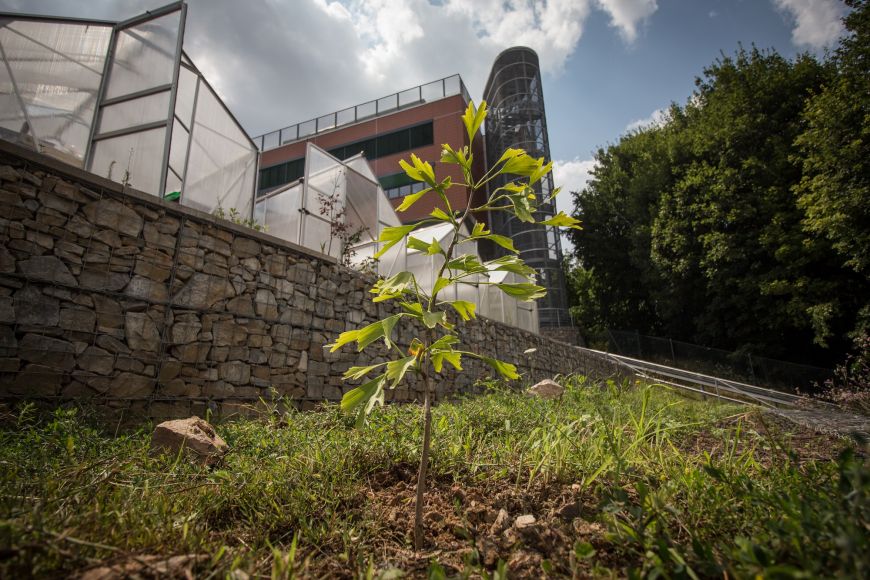A very special specimen of Ginkgo biloba has been discovered by researchers from the Department of Botany and Zoology, Faculty of Science at Masaryk University. By chance, they found that one of the several seedlings of this tree, grown in the faculty’s botanical garden, has four sets of chromosomes rather than the usual two. This tetraploid, as such specimens are called, is absolutely unique in the world of gingkos and their relations the cycads, while potentially capable of providing more of the active substances used, for example, in nutritional supplements.
As botanist Petr Šmarda says about the discovery, which has been published in the prestigious journal New Phytologist, “The gingkos were originally part of a completely different experiment and the size of their genome wasn’t something we were really concerned with. The data for one of the nine seedlings did not match the established standards and we later found out that this wasn’t a measurement error, but a significant discovery.”
Ginkgo biloba is the only surviving representative of a once-numerous group of plants and is considered to be a living fossil. It is a gymnosperm plant, and specimens or species containing more than two sets of chromosomes – polyploids – are extremely rare among the gymnosperms. In the ginkgo itself, there are no traces of this phenomena even in detailed genomic analyses, which make it possible to detect them hundreds of millions of years back. On the contrary, polyploidy is common in flowering plants (angiosperms), with many crops – such as wheat, corn, and potatoes – having undergone polyploidisation in the recent past.
“It seems that from a long-term perspective, polyploidy has more disadvantages than advantages, especially for large-sized woody plants,” adds Šmarda. “A larger genome needs a larger nucleus, which, in turn, needs a larger cell, and so tetraploids are usually larger as a whole. One of the ramifications of this is that the plants have larger stomas, which pose a challenge for their water regime and nutrient transport. It is also questionable whether large cells are suitable for the growth of wood.”

The ginkgo in question, which is now being grown by the researchers at the MU campus, is developing just like the other seedlings. The only visible difference so far is in its leaves, which are more noticeably notched on the outer edges. How it came to exist is unclear. International experts have been trying for several years to create tetraploid ginkgos artificially and have so far been unsuccessful. The natural creation of such a ginkgo in Brno is probably due to the vagaries of the local autumn weather. As Šmarda speculates, “The seeds ripen after they fall to the ground and pollination also takes place on the ground. Ground frost could have interfered with this process to cause the unusual development of the embryo.”
The researchers now face another difficulty: ginkgos are dioecious, which means that some trees are male and others female, and both are needed to produce seeds and a new generation of trees. The single existing tree, therefore, cannot reproduce. “We are hopeful that what happened once can happen again. We’ve collected more seeds in the botanical garden. At the moment, we have around 3,500 seedlings and we are going to search for more tetraploids among them. If we succeed in this, we could create a whole new species of ginkgo and restart the evolution of this line of plants, which is now almost extinct,” concludes Šmarda.
